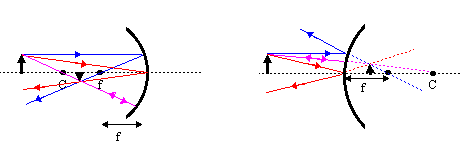Suggestions
Use up and down arrows to review and enter to select.Please wait while we process your payment
If you don't see it, please check your spam folder. Sometimes it can end up there.
If you don't see it, please check your spam folder. Sometimes it can end up there.
Please wait while we process your payment

By signing up you agree to our terms and privacy policy.
Don’t have an account? Subscribe now
Create Your Account
Sign up for your FREE 7-day trial
Already have an account? Log in
Your Email
Choose Your Plan
Individual
Group Discount
Save over 50% with a SparkNotes PLUS Annual Plan!
 payment page
payment page
Purchasing SparkNotes PLUS for a group?
Get Annual Plans at a discount when you buy 2 or more!
Price
$24.99 $18.74 /subscription + tax
Subtotal $37.48 + tax
Save 25% on 2-49 accounts
Save 30% on 50-99 accounts
Want 100 or more? Contact us for a customized plan.
 payment page
payment page
Your Plan
Payment Details
Payment Summary
SparkNotes Plus
You'll be billed after your free trial ends.
7-Day Free Trial
Not Applicable
Renews April 26, 2024 April 19, 2024
Discounts (applied to next billing)
DUE NOW
US $0.00
SNPLUSROCKS20 | 20% Discount
This is not a valid promo code.
Discount Code (one code per order)
SparkNotes PLUS Annual Plan - Group Discount
Qty: 00
SparkNotes Plus subscription is $4.99/month or $24.99/year as selected above. The free trial period is the first 7 days of your subscription. TO CANCEL YOUR SUBSCRIPTION AND AVOID BEING CHARGED, YOU MUST CANCEL BEFORE THE END OF THE FREE TRIAL PERIOD. You may cancel your subscription on your Subscription and Billing page or contact Customer Support at custserv@bn.com. Your subscription will continue automatically once the free trial period is over. Free trial is available to new customers only.
Choose Your Plan
For the next 7 days, you'll have access to awesome PLUS stuff like AP English test prep, No Fear Shakespeare translations and audio, a note-taking tool, personalized dashboard, & much more!
You’ve successfully purchased a group discount. Your group members can use the joining link below to redeem their group membership. You'll also receive an email with the link.
Members will be prompted to log in or create an account to redeem their group membership.
Thanks for creating a SparkNotes account! Continue to start your free trial.
We're sorry, we could not create your account. SparkNotes PLUS is not available in your country. See what countries we’re in.
There was an error creating your account. Please check your payment details and try again.
Please wait while we process your payment

Your PLUS subscription has expired
Please wait while we process your payment
Please wait while we process your payment

Often it will be useful to determine the approximate position of an image, given the position of the object
and the focal length in a lens or mirror system without resorting to the lens equation. We can
do this by drawing diagrams and mapping out the path of the light rays. This process is known as analytical
ray tracing. The basic strategy is to select a significant point on the object (like the top) and to draw several
principal rays from that point. For a mirror, the three principle rays, shown in , are: i) parallel to the axis, returning through the focal point; ii) to the midpoint of the
mirror, reflecting at an equal angle on the opposite side to the central axis; and iii) through the center of the
sphere of which the mirror is a part, returning along the same path.


Ray tracing is especially useful when complicated systems of mirrors and/or lenses need to be analyzed. Ray tracing can give a rough but quick idea of how the system will behave. For example, it can fairly quickly be determined that a single concave lens will always produce virtual, diminished, upright images, irrespective of the position of the object. However, for a convex lens, the location of the image depends on the location of the object. Recall that real objects and real images have so > 0, or sI > 0, while these distances are negative for virtual objects and images (virtual objects can arise when the image for one lens becomes the object for another in a lens system). f > 0 corresponds to converging lenses or mirrors and f < 0 corresponds to diverging lenses or mirrors. Positive yo or yi correspond to upright objects and images respectively. A negative magnification corresponds to an inverted image.
Please wait while we process your payment

